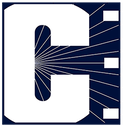Blog |
Discussing current issues in engineering
|
|
Labor Day might mostly be recognized as a chance for a long weekend getaway, but the day is intended to commemorate the over 150 million people in the United States workforce. Here are some fun facts about the holiday to enjoy on your day off:
We hope you have a relaxing day to spend with family and friends! Residents in many cities likely notice (and complain about) what seems like constant construction on their streets, from small pothole fixes to larger repaving and commercial building projects. Construction might be more of a nuisance in highly populated cities during rush hour, but that only amplifies concerns for safety, both of construction workers and for those who try to navigate around it.
According to the National Highway Traffic Safety Administration, pedestrian fatalities have unfortunately increased—primarily at nighttime, when visibility is the lowest. Contributing factors include poor visibility and blind spots on large construction vehicles. While safety has improved over the years on and off construction sites, many operators are starting to invest in stricter safety procedures like vehicle safety systems and radar obstacle detection technology. One example of these systems is called a Backsense Radar, which uses Frequency Modulated Continuous Waves to eliminate the multiple blind spots on a vehicle, alerting its driver if objects are nearby. It gives a loud, clear warning when a blind spot obstruction appears and transmits a continuously-varying signal. It can also be customized to fit different sized vehicles on construction sites across customized detection areas. Systems like this are more effective than alternative pulsed radar technology, which provides slower feedback and can often only cover one blind spot at a time. This is only one way in improving safety on and around construction sites, but systems like Backsense are a great start. The ability to detect objects and people in blind spots is crucial to safety on and around worksites, where workers have to carefully navigate their every move. To read more about the ways radar is used to decrease injuries on the road, click here for the full article.  Attribution: Automobile Italia, (CC BY 2.0) You might have noticed more and more mention of autonomous cars recently—big companies like Tesla and Google are working on taking advantage of what many hope is the next big technological leap. Driverless cars come with many potential benefits including safer driving, but there are still issues to work out before making autonomous driving mainstream. One of them is basic reasoning.
Humans are remarkably good at navigating roads we’re unfamiliar with; even when using a GPS, we rely on observation and our senses to determine where we need to go. Driverless cars, however, can’t reason in the same way. Part of the problem is due to how these cars navigate now: in every new area, they first use complex maps to analyze all new roads, then generate 3D scans to rely on. This process is time-consuming and not always reliable in more rural areas. Researchers at MIT are working on this shortfall by creating a system that uses only simple maps and visual data to help driverless cars navigate routes in new, complicated environments. By creating an end-to-end navigation system, offering new maps available for cars to download, and creating an easier way to store and process maps, these cars should be able to navigate more easily in unfamiliar areas. Since car-to-infrastructure communication is essential for driverless cars to function smoothly, researchers are hoping this new system will make the process run more efficiently. It turns out that even smart, driverless cars need to depend on human intuition to fill in the gaps that advanced technology can’t match! For more on MIT’s project, see the article here on Science Daily. |
Colman Engineering, PLCA professional engineering firm located in Harrisonburg, VA Archives
January 2022
|



 RSS Feed
RSS Feed
